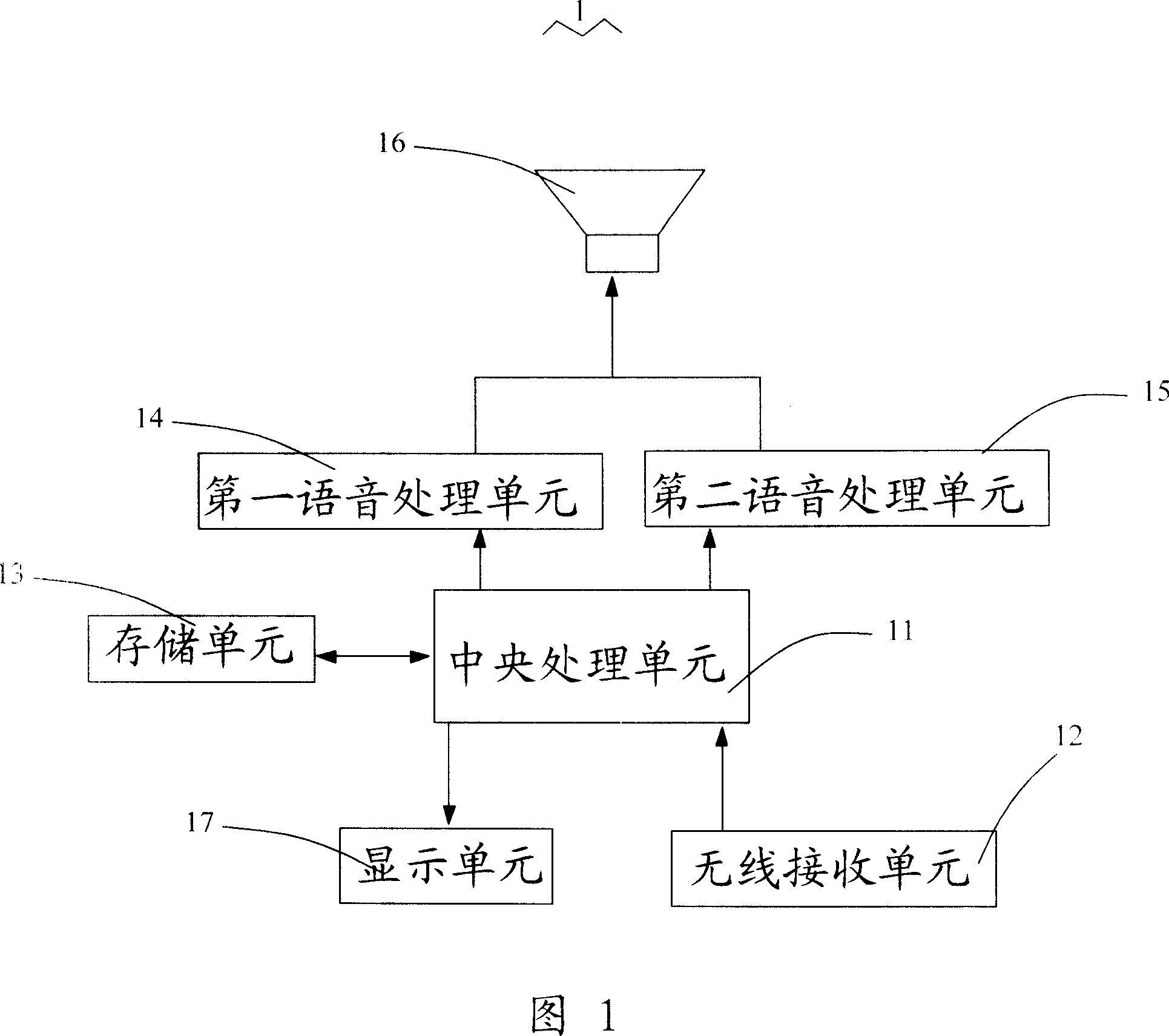Wireless tour guide device
A wireless and voice processing technology, applied in the direction of electromagnetic wave transmission system, electrical components, transmission system, etc., can solve the problem of single playback
- Summary
- Abstract
- Description
- Claims
- Application Information
AI Technical Summary
Problems solved by technology
Method used
Image
Examples
Embodiment Construction
[0015] The present invention will be described in detail below in conjunction with the accompanying drawings and embodiments.
[0016] As shown in Figure 1, wireless tour guide device 1 of the present invention comprises: central processing unit 11; Be used for receiving the wireless receiving unit 12 of external wireless trigger signal; Be used for storing the storage unit 13 of commentary and background sound; A first speech processing unit 14 and a second speech processing unit 15 for processing background sounds; and a speech output unit 16 connected to the first speech processing unit 14 and the second speech processing unit 15 .
[0017] When in use, a wireless transmitter is set at the entrance or appropriate position of each scenic spot, and the wireless transmitter emits a wireless signal with coded information corresponding to the scenic spot. When there is no wireless signal, the user can use the second voice processing unit 15 to play various background sounds stor...
PUM
 Login to View More
Login to View More Abstract
Description
Claims
Application Information
 Login to View More
Login to View More - R&D
- Intellectual Property
- Life Sciences
- Materials
- Tech Scout
- Unparalleled Data Quality
- Higher Quality Content
- 60% Fewer Hallucinations
Browse by: Latest US Patents, China's latest patents, Technical Efficacy Thesaurus, Application Domain, Technology Topic, Popular Technical Reports.
© 2025 PatSnap. All rights reserved.Legal|Privacy policy|Modern Slavery Act Transparency Statement|Sitemap|About US| Contact US: help@patsnap.com

